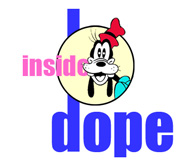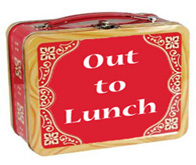|
MUNDO ROTUNDO
THE KEY TO THE HIGHWAY:
Episode1, part 1, a brief, riled-up soliloquy about life in Puerto Rico.
Episode 1, part 2, a close-up look at one of the island’s most personable coffee roasting operations, Café Mayor, plus Rotund’s first roundup of art shows.
Episode 2, part 1, in which we review Pedro Vélez's "Godfuck," study an art sale posing as an exhibition, and get a haircut.
Episode 2, part 2: the haircut continues, there’s a regrettable moment with fruit, and we drop by the fresh San Juan art-o-rama =DESTO for a talk with the founders.
Episode 3, part 1 covers, if not the waterfront, at least that occasional Nuyorican-Borinquen artfest “The (S) Files” at Museo de Arte de Puerto Rico, and visits scenic Caguas to marvel at another new kid on the block, ÁREA.
Episode 3, part 2 takes a wild ride on the Tren Urbano.
Episode 4, part 1 gets the unexpected: some mail. In part 2, we hit the road for points south, with stops at the Frade Museum, El Cuñao, King’s Cream, and Museo de la Historia de Ponce.
Episode 5, part 1 weighs Puerto Rico’s travails against Miami’s prosperity and scratches its head. Why does Fred Snitzer say the things he says?
Episode 5, part 2: more art shows and the artists who make them, including the evergreen Antonio Martorell and a stealthy group called El Polverío.
Episode 6, part 1 and part 2 offer blow-by-blow coverage of Puerto Rico’s first-ever art fair, CIRCA 2006, and the whole world asks, “What’s it all about, Rotund?”
Episode 7 takes the slow train to Hato Rey and Galerías Prindari, where it meets the friendly natives.
Episode 8 knocks on the door of the Berezdivin collection, hoping to get in, and then muses disapprovingly about el Museo de Arte de Puerto Rico.
Episode 9, part 1 wallows in the paradoxes of summer in Puerto Rico, including a curious exhibition at la Escuela de Artes Plásticas, while part 2 looks at the work of painter-writer Javier Martínez.
Episode 10: the excellent exhibition space tagRom has a birthday and the laggardly Rotund crew tries to catch up on San Juan art doings, while Tiny Type travels southward to watch Rafael Trelles do his thing at el Museo de Arte de Ponce.
Episode 11: “Two Cards from the Bottom of the Deck?” This could only mean Pedro Vélez.
Episode 12 invites all and sundry to get down with La Muestra Nacional de Arte. Plus, =Desto hits its stride and doesn’t look back.
Episode 13: is La Muestra Nacional the only thing on the Rotund mind? What about sex? Rapacious legislators? What happened to lechón, pasteles, and Heineken tall boys?
Episode 14 brings us yet more Muestra, but also, what? Yes, Pedro Vélez, now in his new role as Rotund art dick. Plus, new shows at San Juan’s La Liga de Arte and Crema Gallery.
Episode 15 proves that the island is cooking: The International Book Fair, experimental prints at =Desto, Milton Rosa-Ortiz at Museo de Arte de Puerto Rico. The Basquiat drawing show is not terrible, but what is a private collection doing at MAPR?
Episode 16: the government is pilloried, artists are praised, food is mentioned, jokes are cracked that no one gets.
Episode 17 visits Art Basels past. This may strike some readers as cheap and retrograde, but we think the vintage years never get old. Besides, we also look at a Julie Kahn trading-card project, and what could be groovier than that?
Episode 18 looks like a preview, reads like a preview, and even smells a bit like a preview. But is it really a preview?
Episode 19: Barcelona. Need we say more?
Episode 20 visits the Corozal redoubt of Titi Noris, then gets down and gets funky with Julio Micheli.
Episode 21 tramps through the dirty snow of New York City and sees a bunch of fur coats posing as art.
Episode 22: the good, the bad, and the dubious underbelly of the Puerto Rican art world: shows and those who write about them.
Episode 23 takes a break from the box step and does the boogaloo instead: some advice about going public.
Episode 24 is an extensive chat about a wide-ranging show, The DAMS 2. Who exactly are Dildo and Culo?
Episode 25 marks the beginning of the end. At least the end of the long wait for CIRCA 2007.
Episode 26: enough CIRCA to please the gluttonous and outrage the discreet.
Episode 27 provides one last thrill from the Puerto Rican scene before our Ecuadorian sojourn: we visit =Desto’s rad Publica.
Not to be missed, of course: Booty Bundt, the cake that says it all, and BUY THIS NOW! an exclusive offer to be a part of this toney enterprize.
THE
OUTSIDE
WORLD
Follow the links to the Miami and Puerto Rican art worlds, and to perspectives bigger than both.
MIAMI
The Next Few Hours
Critical Miami
Miami Art Central
Locust Projects
Centro Cultural Español
Edge Zones
Brook Dorsch Gallery
Kevin Bruk Gallery
Bernice Steinbaum Gallery
Fredric Snitzer Gallery
Ambrosino Gallery
Leonard Tachmes Gallery
Diaspora Vibe Gallery
Subtropics
Miami Art Exchange
Worm-Hole Laboratory
The Moore Space
PUERTO RICO
Museo de la Historia de Ponce
Museo Pío López Martínez
(The Frade Museum)
Museo de Arte de Ponce
Museo de Arte de Puerto Rico
Museo de Arte Contemporaneo
Museo de la UPR
Los Balcones de San Juan
La Casa del Arte
Programa de Artes Plástics del ICP
CIRCA Puerto Rico
AUTOGIRO
Trance Líquido
M de Mater O’Neill Audio Archive
THE WORLD
Art Nexus Magazine
artnet.com
Tom Moody's Weblog
BookDaddy
Edward Winkleman’s Blog
Artkrush
Rotund World covers Miami, la Isla, and the world.
The magazine is designed and written by Joel Weinstein. It is a periodic compendium of smirking opinion and unvarnished facts. Don’t blame us.
Photos, unless otherwise credited, are by none other than J Weinstein.
You can contact Rotund World at this address or, if you prefer, our other one.

|
|
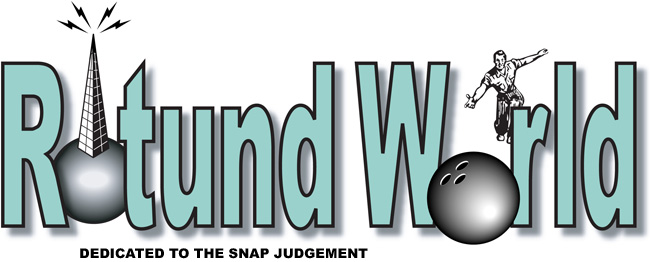
IX Bienal de Cuenca
Special Edition
The Long Way Home, At Last
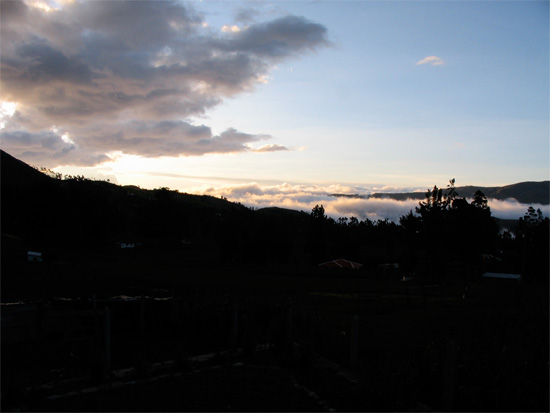
The scene is supposed to be dark, sun-kissed, elegaic. We’re about to depart Ecuador for the humdrum everyday of Puerto Rico, which many folks regard as a tropical paradise, of course. Oh, we do, we do, but our little sojourn to the high sierra was about as close to living a dream as we’ve gotten lately. To help ease the post-orbital remorse, we poured ourselves into a third page—no kidding!—of Cuenca Biennial coverage, which you can go directly to right here. We like to think it’s the definitive overview, the final word. Or, if you haven’t been as diligent as you should have, you can do what the Ecuadorians do, below.
Siga no más
It all looks so familiar. You may be among the fortunate few who’ve passed this way before, who’ve traipsed across this vale of tears, who’ve already bitten into this particular enchilada. If you want to skip the preliminaries and peer into the future like the forward- looking pionero you fancy yourself to be, go right ahead. Just poke this word, and we almost guarantee you will be transported to the next page. What you will find there is anybody’s guess, but we’ll give you a clue. More Cuenca Biennial! Not another word from us, however; not a hint, not a syllable. Our mothers always told us it’s wisest—sanest even—to begin at the beginning and that advice has made us the vibrant creatures we are today. Unless you object, then, we urge you to read on.
Watch this Space

We find ourselves in the middle of the world, and it’s not so bad. Of course, Cuenca is nothing like this. This is lovely Cañar, while Cuenca is a real, if small and provincial, city. We think of Cuenca as Ponce without King’s Cream but with a twenty-year history of what is reputedly one of the better art biennials in Latin America.
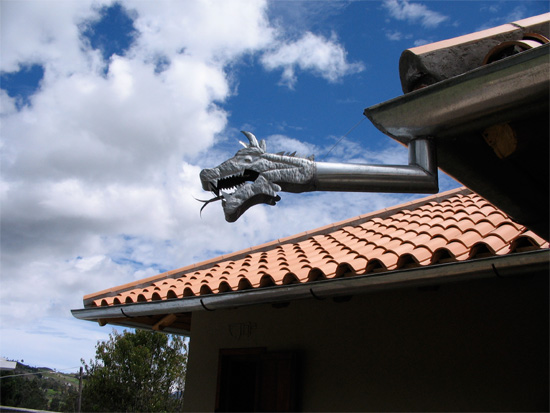
Soon the extraordinary friendliness, hospitality, and sane behavior of the natives will seem like a fleeting dream of some charming far-away, and we will be submerged once again in the self-aggrandizing burble of the art world, with its pointless scurrying about and its much ado about little. Tune in to our Rotund reports and feel the exasperation. We cannot promise daily updates, but we’ll aim for as much fulminating and annoyance as we an pack into our week-long stay.
We Have Photos!
Exclusively from Cuenca, Ecuador. Here before you are some of the first published photographs from the IX Bienal de Cuenca. That is, the IX Bienal de Pintura de Cuenca, whose return to a focus on painting in our multimedia times has caused a lot of rolling of eyes and head-scratching among local bohemians. Below, a few shots from that colonial yet maddeningly modern city, Cuenca. As you can see, the Bienal held a press conference and a few people came. The Bienal jury consists of, from left to right, (oddly non-voting) artist-art historian Hernán Pacurucu, art historian-curator María Fernanda Cartegena, Marisol Nieves from Sotheby’s Latin American division, and, on the other side of Bienal director René Cardoso, Bill Kelley from the web magazine Latinart.com. Next, an outdoor photographic installation on ceramic tiles, Proyecto Yuyana: Residencia, which tells—by way of an outbreak of empty, half-built split-levels in the cornfields of the Ecuadorian sierra—the strange and in many ways tragic story of a twenty-first century mass emigration. The installation, created by María Teresa Ponce, has great power if you know the details of the great flow of wealth that enters Ecuador from distant, absent farmers-turned construction workers and fry cooks. The map in the center is an existing Cuenca fixture.
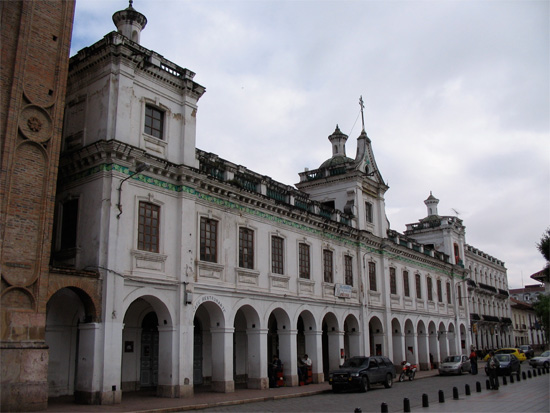
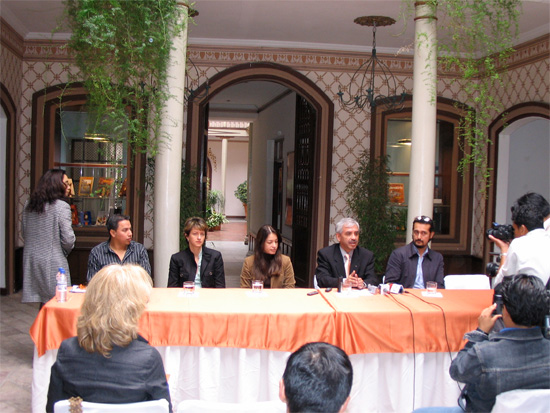

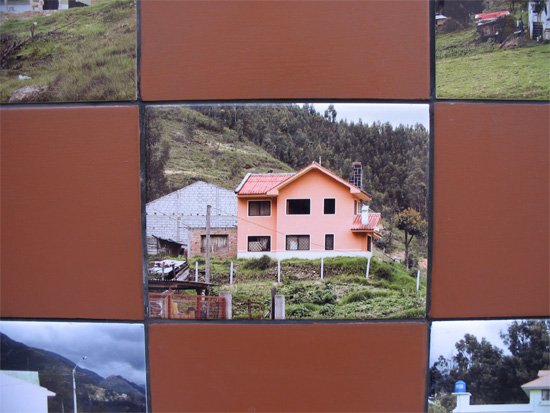
Like any artworld scheme hatched in a provincial hideaway with cosmopolitan pretentions, the Bienal has blundered into controversy and done a fairly inelegant job of sweeping things under the rug. Santiago Reyes’s relatively innocent image below was shitcanned from the Bienal by city authorities, but no one thinks the Bienal handled that bruhaha or the erasing of Mariano Molina’s lovely, ghostly mural with sufficient readiness or candor.
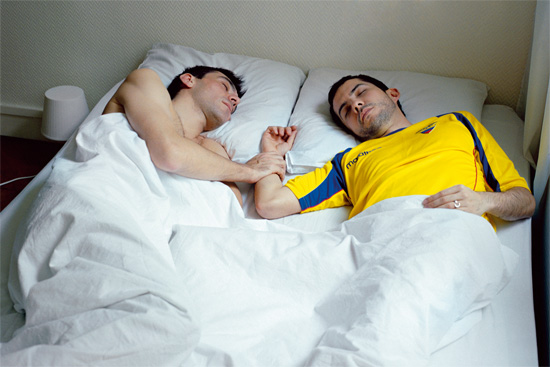
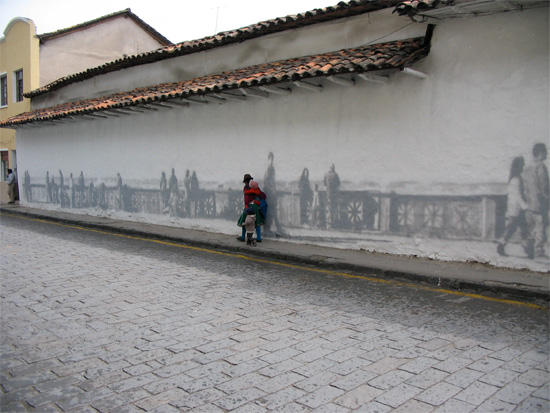
Molina’s work as you see it above has found a new and actually more interesting setting a few blocks from the city’s historic center where it was planned for and ignominiously painted over. The tiled roof above it and the wall’s aged surface only enhance the work’s evocative qualities. We’ll have more on the artist’s plight and the Bienal’s confusion in dealing with it, but meantime cast your eyes upon some of the event’s best, such as the details from the US collective Caraballo Farman’s literally chilling video on a block of slowly melting ice, Contours of Staying, from 2007, and Mateo López’s neat, startling, and fun Narración de Encuentros Casuales, from 2005-2006. Not to be a chauvinist, but Nayda Collazo-Llorens’s roomful of small drawings also takes our cake. There is much, much more, but we’re going to wait for our return to the enchanted Caribbean to fill you in. We’ll have our boricuas abroad report, plus news of our long-lost pal, the good Cisco Jiménez.
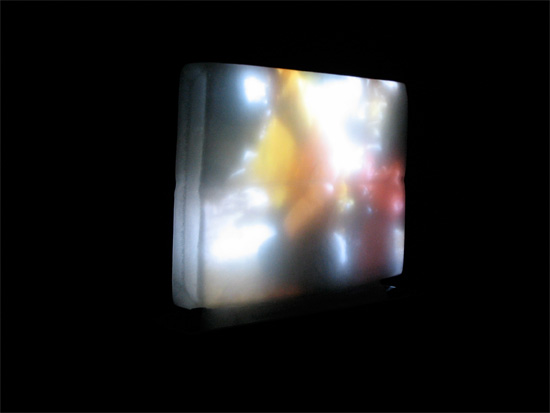
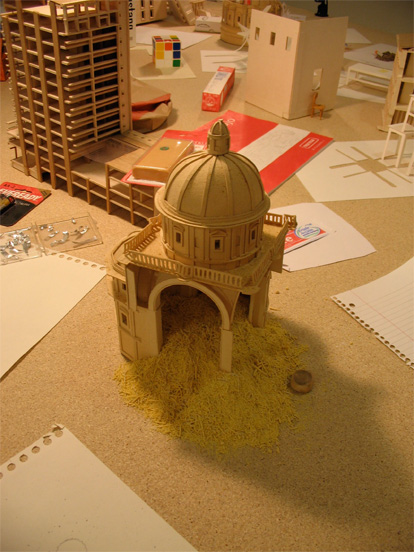
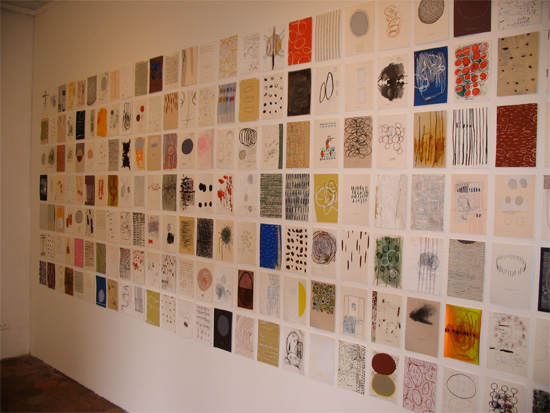
López won one of the Bienal’s big cash prizes, by the way, and Ponce got an honorable mention, just to show you how listo the jury was.
To continue click here. To go back? Try this.
|

